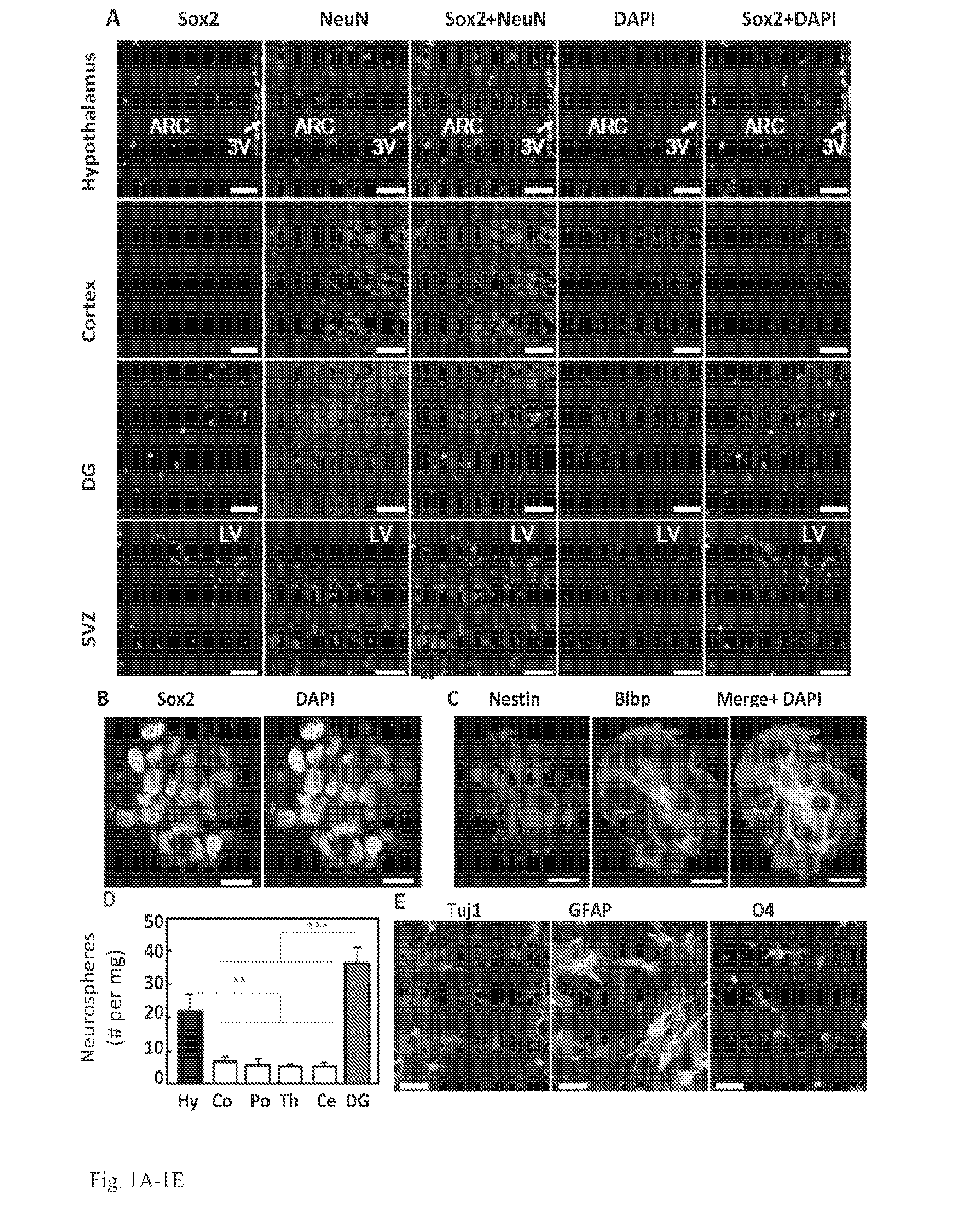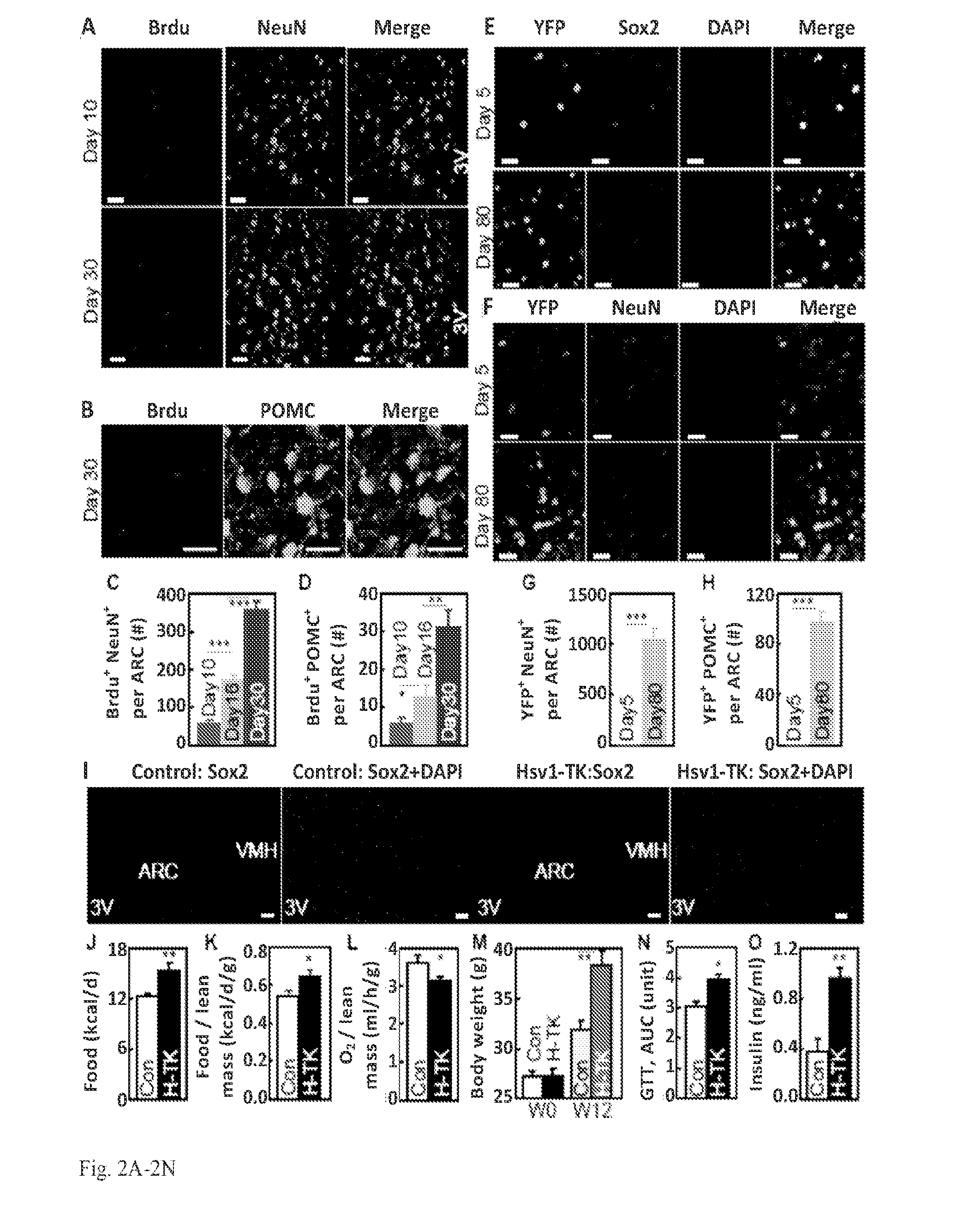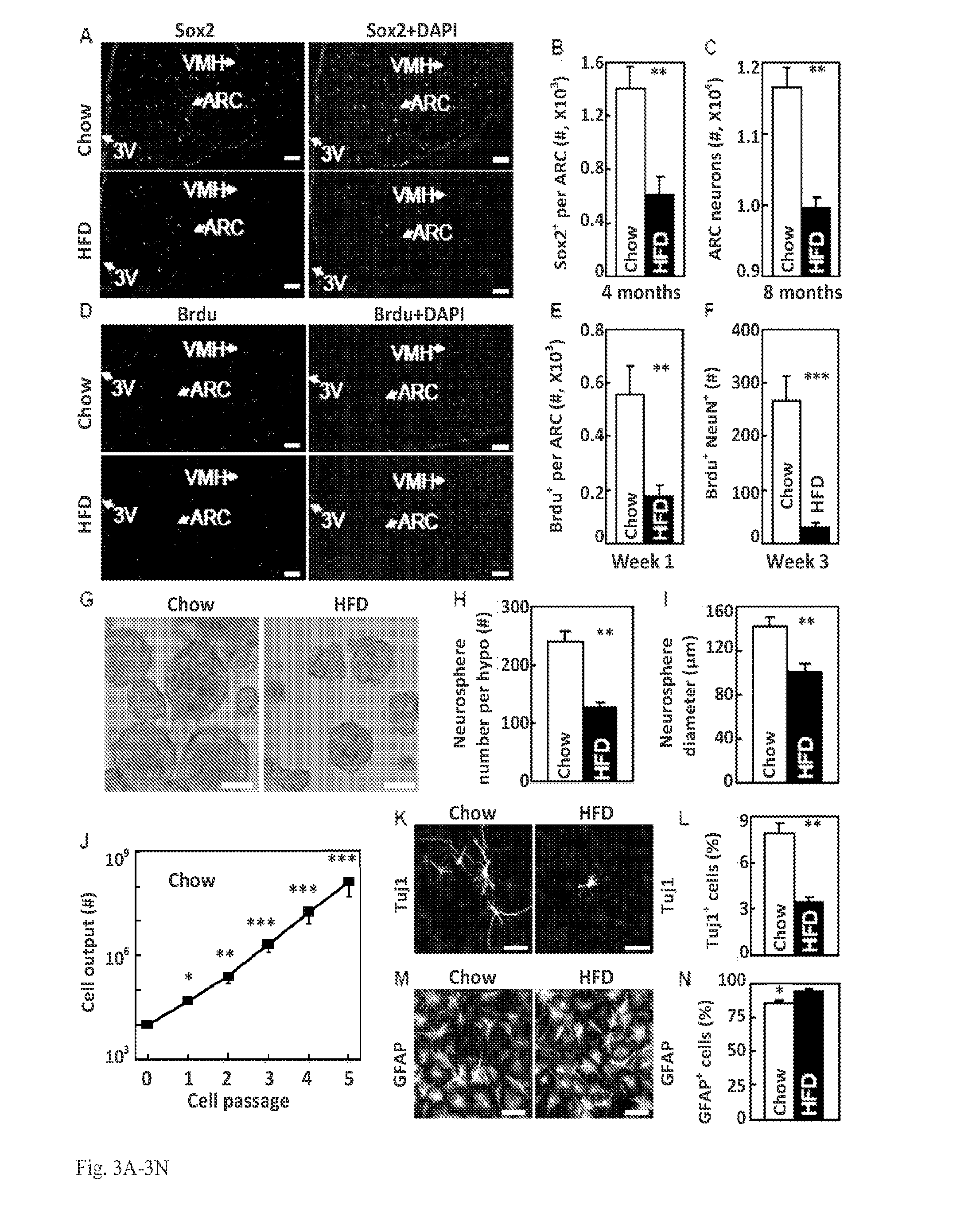Neural stem cell therapy for obesity and diabetes
a neuronal stem cell and obesity technology, applied in the field of neuronal stem cell therapy for obesity and diabetes, can solve the problems of unstudied hypothalamic nsc predicability, uninvestigated,
- Summary
- Abstract
- Description
- Claims
- Application Information
AI Technical Summary
Benefits of technology
Problems solved by technology
Method used
Image
Examples
Embodiment Construction
[0022]The methods disclosed herein are useful for treating an obese subject. In an embodiment, an “obese” subject is characterized by the subject having a body mass index of 30.0 or greater (and thus includes the states of significant obesity, morbid obesity, super obesity, and super morbid obesity). In an embodiment, in regard to gender, women with over 30% body fat are considered obese, and men with over 25% body fat are considered obese. The methods disclosed herein are also applicable to treating an overweight subject. In an embodiment, an overweight subject is one having a body mass index of from 25.0 to 29.9.
[0023]The methods disclosed herein are useful for treating an obesity comorbidity in a subject. In an embodiment, the obesity comorbidity is being treated and is diabetes, type 2 diabetes, hypertension, heart disease, or stroke. In a preferred embodiment, the obesity comorbidity is type 2 diabetes.
[0024]As used herein, to treat obesity in a subject who has obesity means to...
PUM
| Property | Measurement | Unit |
|---|---|---|
| surface area | aaaaa | aaaaa |
| energy expenditure | aaaaa | aaaaa |
| density | aaaaa | aaaaa |
Abstract
Description
Claims
Application Information
 Login to View More
Login to View More - R&D
- Intellectual Property
- Life Sciences
- Materials
- Tech Scout
- Unparalleled Data Quality
- Higher Quality Content
- 60% Fewer Hallucinations
Browse by: Latest US Patents, China's latest patents, Technical Efficacy Thesaurus, Application Domain, Technology Topic, Popular Technical Reports.
© 2025 PatSnap. All rights reserved.Legal|Privacy policy|Modern Slavery Act Transparency Statement|Sitemap|About US| Contact US: help@patsnap.com



